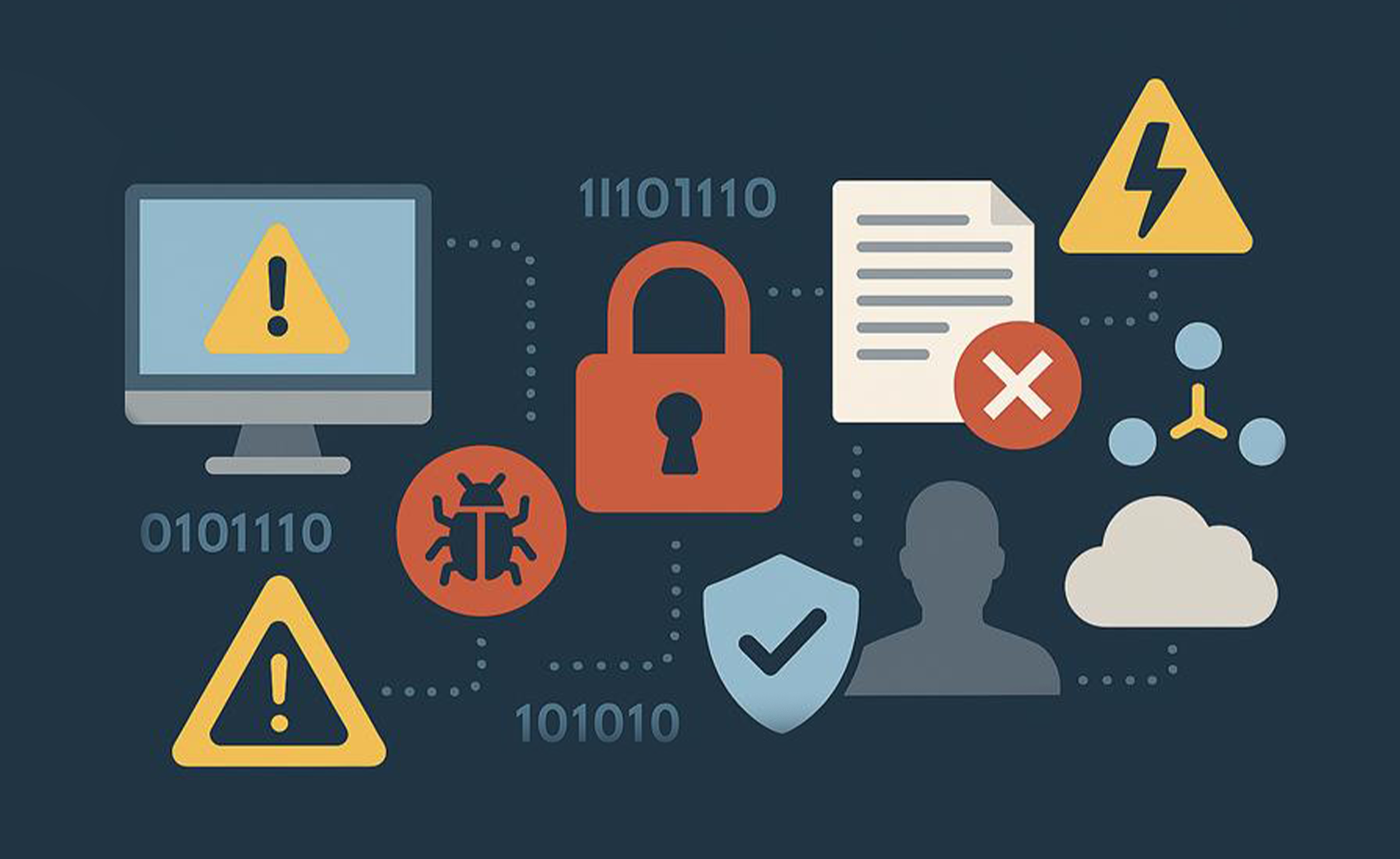The most important thing in brief:
- IT risks are potential threats to data availability, integrity, and confidentiality.
- A structured risk management helps in systematically identifying weak points and deriving appropriate protective measures.
- Regular analyses, targeted awareness training and technical security measures reduce typical IT risks sustainably.

What are IT risks?
IT risks identify potential threats that can have a negative impact on information processing, availability, integrity, or confidentiality. These risks arise, for example, from technical errors, cyber attacks, human error or natural disasters.
Typical IT risks
- cyber attacks (malware, phishing, DDoS)
- loss of data due to faulty hardware or failed backups
- Outdated software with security gaps
- misconfigurations from systems or networks
- Misuse of access rights by Insiders
- Cloud security breaches
- Physical threats such as fire, water, theft
A complete IT risks overview is essential in order to be able to realistically assess the risk level and to take appropriate protective measures.
Why is structured IT risk management necessary?
The systematic analysis of IT risks is not only best practice, but in many cases required by law or regulation.
Statutory requirements and standards:
- EU General Data Protection Regulation (GDPR): requires, among other things, technical and organizational measures to protect personal data.
- IT Basic Protection Compendium from the BSI: provides practice-oriented recommendations for minimizing risks.
- ISO/IEC 27001: Information Security Management Systems (ISMS) standard
Professional risk management not only reduces the likelihood of security incidents, but also increases trust among customers, partners and stakeholders.
How do you create an IT risks overview?
The preparation of a structured IT risk analysis is carried out in several steps:
- Identification of IT assets: Which systems, services, data and infrastructures exist?
- threat analysis: What are the risks for the individual assets?
- Vulnerability analysis: Where are the vulnerabilities?
- risk assessment: How likely is it to happen and how high is the potential damage?
- action planning: Define technical, organizational and personnel countermeasures
Practical example on IT risks: a university in crisis mode
A renowned university in Germany is the target of a targeted phishing attack. An employee opens a manipulated email attachment that injects malware into the network. Within a few hours, central services such as the e-learning platform, mail server and student administration system are paralyzed. Hundreds of tests have to be postponed, and confidential research data has been compromised. The university needs weeks to restore normal operations. An incident that impressively shows how real IT risks can have not only economic but also educational policy effects.
What challenges arise during implementation?
- IT infrastructure complexity: Many companies do not have an up-to-date overview of their systems.
- Manual documentation is prone to errors and becomes obsolete quickly.
- Lack of resources and expertise leads to gaps in risk management.
Here sets Docusnap on.
Docusnap: Identify and document IT risks efficiently
Our Docusnap software helps companies to record and document their IT landscape fully automatically and make risks visible.
Risk-related benefits:
- Automated IT inventory: All IT assets are recorded agentless and regularly
- Transparent rights analysis:
Authorization analyses for AD, Exchange, file servers and more reveal potential risks of misuse - network plans and charts: Visualizations reveal weak points
- Reporting & planning:
Individual reports for audits and management decisions
By integrating Docusnap into risk management, potential threats can be identified at an early stage and appropriate countermeasures can be implemented.
Best practices to reduce typical IT risks
- Regular risk analyses performing
- Automate IT documentationto have up-to-date overviews at any time
- backup strategies define and test
- Check and restrict access rights
- Security awareness training for employees
- Updates and patches consistently import
- Monitoring set up for critical systems
These best practices are not one-off measures, but must be continuously incorporated into everyday business life. In particular, the combination of technical precaution and organizational awareness increases effectiveness. Automated documentation — as made possible by Docusnap — is the basis for being able to identify risks in the first place and then strategically evaluate them. Functioning backups and a clear distribution of roles and rights are just as essential to minimize damage in an emergency. Awareness training creates a safety-conscious corporate culture in which non-technical employees also contribute to risk reduction.
Conclusion: IT risks are manageable
IT risks cannot be completely avoided — but they can be significantly reduced with well-thought-out risk management. Companies that have an overview of their IT infrastructure, know typical threats and plan appropriate measures have a clear advantage.
With Docusnap IT managers are provided with an effective tool to identify risks, create transparency and raise IT security to a new level. This is how risk management is transformed from an obligation to a strategic opportunity.
Next steps
Start with an inventory of your IT infrastructure and identify the relevant areas of documentation, such as network diagrams, user rights, or operating manuals. Docusnap supports you with functions for automated inventory, analysis and documentation in just a few clicks. Use the free 30-day trial version to get started with structured IT documentation right away.
Try now for free


